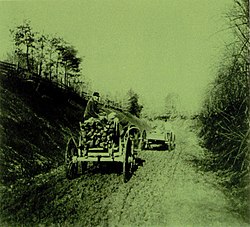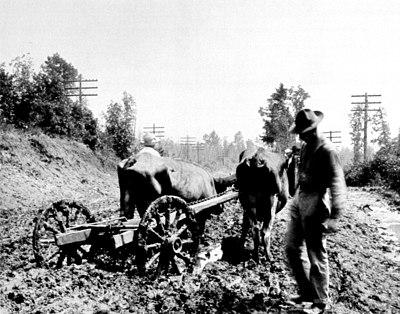Either way—loose sand or deep mud—the loads a farmer could haul with his teams were only a fraction of what they would have been on a reasonably good road, and this difference was, in effect, a tax on everything the farmer bought or sold. The following account of one farmer’s struggle with his local roads is typical of the era:
After the war I lived 9 miles north of Charlotte. The roads at times were so very bad that everybody was landlocked; the ladies could not go to church in winter; they hardly ever thought of going to town. The men went on horseback and sometimes it took a good thoroughbred to carry you there. . . . The first thing that impressed me with the importance of good roads occurred in 1867. It rained almost everyday for a month; the roads were horrible. I left home with two wagons, one with four horses and one with three, to go to Charlotte, only 9 miles away, for some fertilizer. I got a ton on one wagon and half a ton on the other, and when within a mile and a half of home on the return trip we stalled, and had to take the horses out and leave the wagons there all night. We went back after the wagons the next day and it took until nearly 11 o’clock to get them home. The merchant from whom I got the guano paid $5 per ton freight on it from Baltimore to Charlotte. Considering everything, it cost me over twice as much to take the guano 9 miles from Charlotte to my home as it did to bring it from Baltimore to Charlotte on the railroad.[1]

The Jefferson Memorial Road near Charlottsville, Va. before improvement.

The mud could be so sticky that a pair of oxen had difficulty getting these wheels, without a load, free.
38
- ↑ S. Alexander, History of Good Road Making in Mecklenburg County, Proceedings of the North Carolina Good Roads Convention, Bulletin No. 24 (Bureau of Public Roads, Washington, D.C., 1903) pp. 22, 23.
